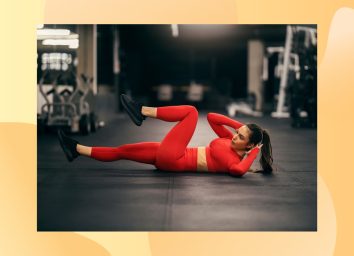These Exercise Habits Are Destroying Your Knees After 50
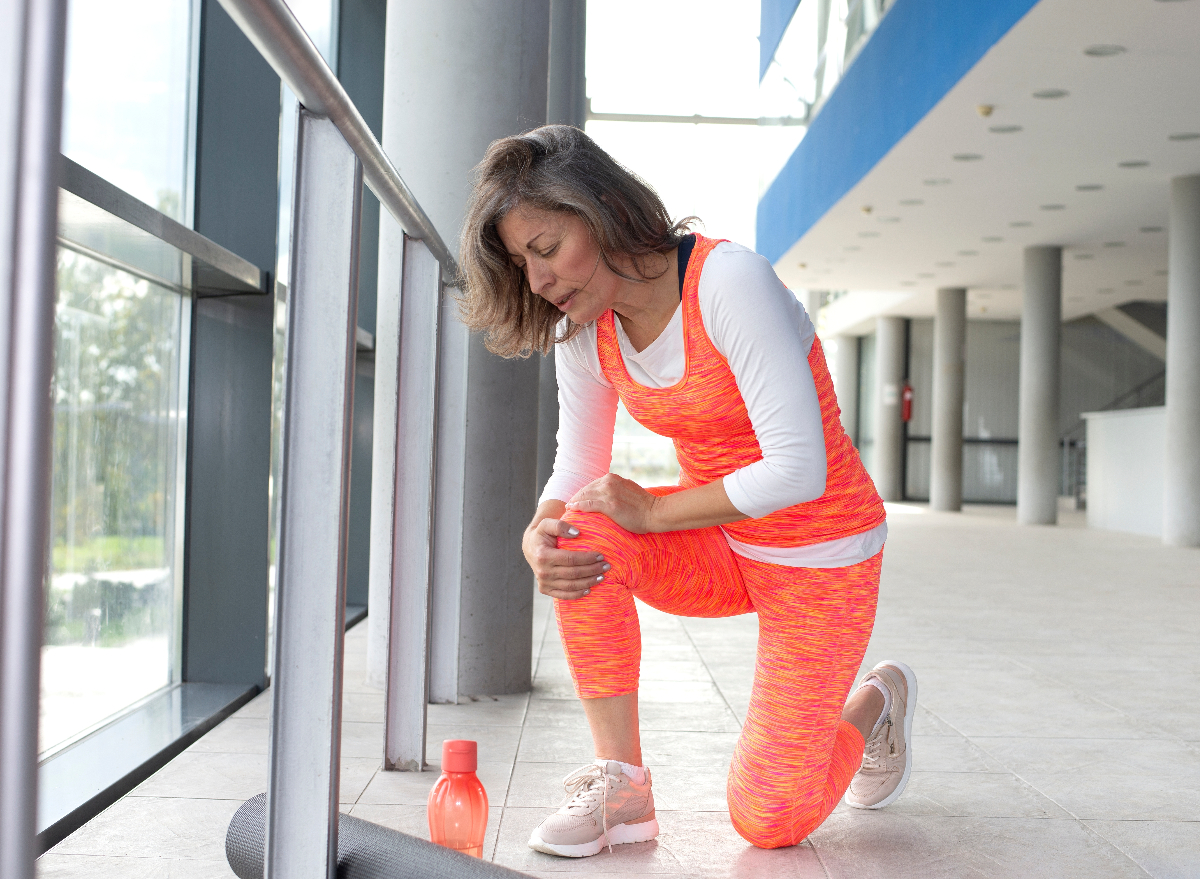
Do you have a love-hate relationship with your knees? Let's be honest: You can't live an active life without strong knees. If you don't take care of this crucial part of your body, your health and overall lifestyle can be impacted in an extremely negative way. In fact, there are several exercise habits that destroy your knees after 50 that you should be mindful of. Are you guilty of any of them? You're about to find out!
Your knees can really be taken for granted. Just think about it: They help you get from one place to another. You can't sit, drive, climb stairs, bike, lift packages, or perform many daily tasks without seamlessly being able to bend your knees. According to Harvard Health Publishing, every step you take puts pressure on your knees. Over the years, your ligaments and muscles weaken, and the cartilage becomes compromised. If you are prone to osteoarthritis or are overweight, you're at an even greater risk of physical decline.
Many factors have a huge bearing on your knee health and can cause wear and tear as you grow older. Exercise is no exception, so you should be in the know of the worst exercise habits that destroy your knees after 50. We spoke with Carissa Fernandez, Club Pilates master trainer and health and wellness coach, who shares what not to do when it comes to fitness after 50.
1. You're doing high-impact exercise.
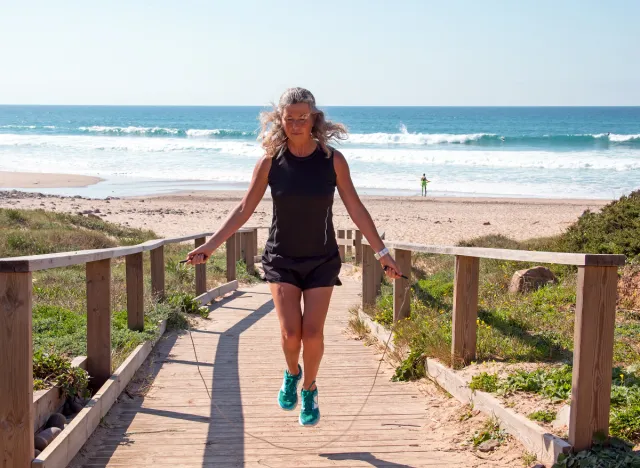
High-impact exercise is ultra-productive when it comes to getting in a solid calorie-burning workout. On the one hand, you'll give your cardiovascular conditioning a nice little boost and raise your heart rate, according to Dynamic Physio. It's a productive way to exercise if your goal is to torch calories and fat. Performing high-impact physical activity can also benefit your bone health.
On the other hand, high-impact exercises can be extremely strenuous on your ligaments, tendons, and joints. This type of training is equivalent to around 2.5 times the weight of your entire body. Dynamic Physio explains an intense high-impact workout isn't recommended for older adults, who are at much greater risk of damaging their joints and bones.
It's always a smart idea to check in with a healthcare professional or certified personal trainer before starting any new exercise plan, especially one that is more aggressive on your body.
2. You're playing sports on concrete.
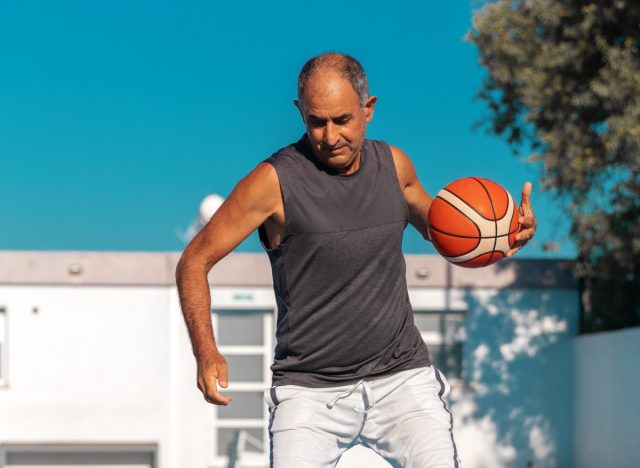
Playing sports on concrete is a bad idea, especially if you're concerned about the health of your knees. A concrete surface won't provide shock absorption to your hips, feet, lower back, or knees, which could lead to injury, according to Advanced Orthopaedic Centers.
"Over time, running on the sidewalk and jumping to play basketball on the court can start to wear on your knee joints. Even doing Bootcamp-style workouts that add jumping jacks or burpees can start to make an impact on knee health," Fernandez explains.
Instead of engaging in sports on concrete, Fernandez suggests incorporating cardio into your routine by working out on a trampoline (aka "rebounding) or a jump board on a Pilates reformer. "An added bonus of rebounding on the Pilates Reformer is that it helps to build bone density as you age as well," Fernandez says.
3. You're choosing fashion over function for footwear.
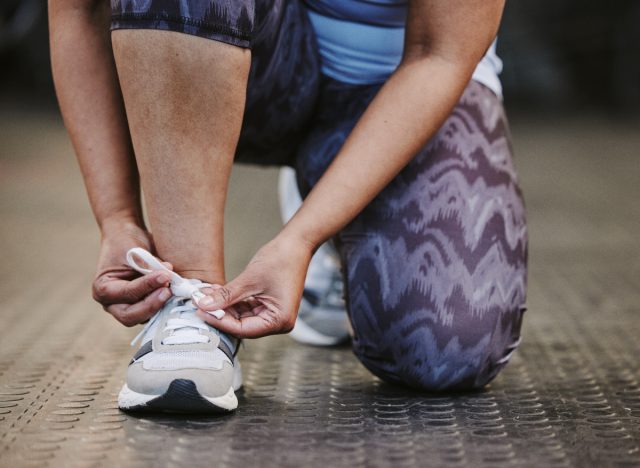
Thinking of function over fashion is crucial when it comes to choosing proper footwear for exercise. Bad shoes can actually wreak havoc on your knees, including misalignment, strained tendons, overpronation (when your leg and knee turn in upon each step), instability, and fatigue in your lower body, according to the Noyes Knee Institute.
"Sure, those trendy sneakers look cute, but if they are not providing you with arch support, they are not going to make you feel as cute as you age," Fernandez says. "It is important to wear shoes that support your arches and keep your ankles and knees properly aligned. If you have been a victim of bad shoes, it's not too late to try to correct the problem."
When shopping for just the right footwear, look for insoles that have proper arch support. The next step is incorporating a corrective exercise program into your routine, like Pilates, which spotlights alignment. "At Club Pilates, we start every class with footwork, which helps to correct gait patterns and strengthens the muscles that encourage correct alignment in our hips, knees, and ankles. Many individuals come to us with knee problems and leave with less pain, or even pain-free," Fernandez adds.
4. You're spending more time being sedentary than being active.

Last but not least, you likely know how unhealthy a sedentary lifestyle is. Fernandez explains, "Exercise is CRUCIAL for joint health and mobility. It doesn't have to be intimidating—taking on a low-impact exercise routine, like Pilates, with a focus on stability, mobility, and stretching is a great place to start if you are just starting to get back into a fitness routine after experiencing knee or any other joint issues."
Working on things like stretching and foam rolling can be so beneficial to your joints and relieve muscle stiffness. This will put you on the right path to achieving healthier joints and knees.
- Source: https://www.health.harvard.edu/pain/age-proof-your-knees
- Source: https://dynamicphysio.co.nz/high-impact-vs-low-impact-exercise-which-is-right-for-you/
- Source: https://advancedorthocenters.com/how-different-surfaces-affect-your-running/
- Source: https://noyeskneeinstitute.com/8-ways-the-wrong-shoes-can-affect-your-knees/



